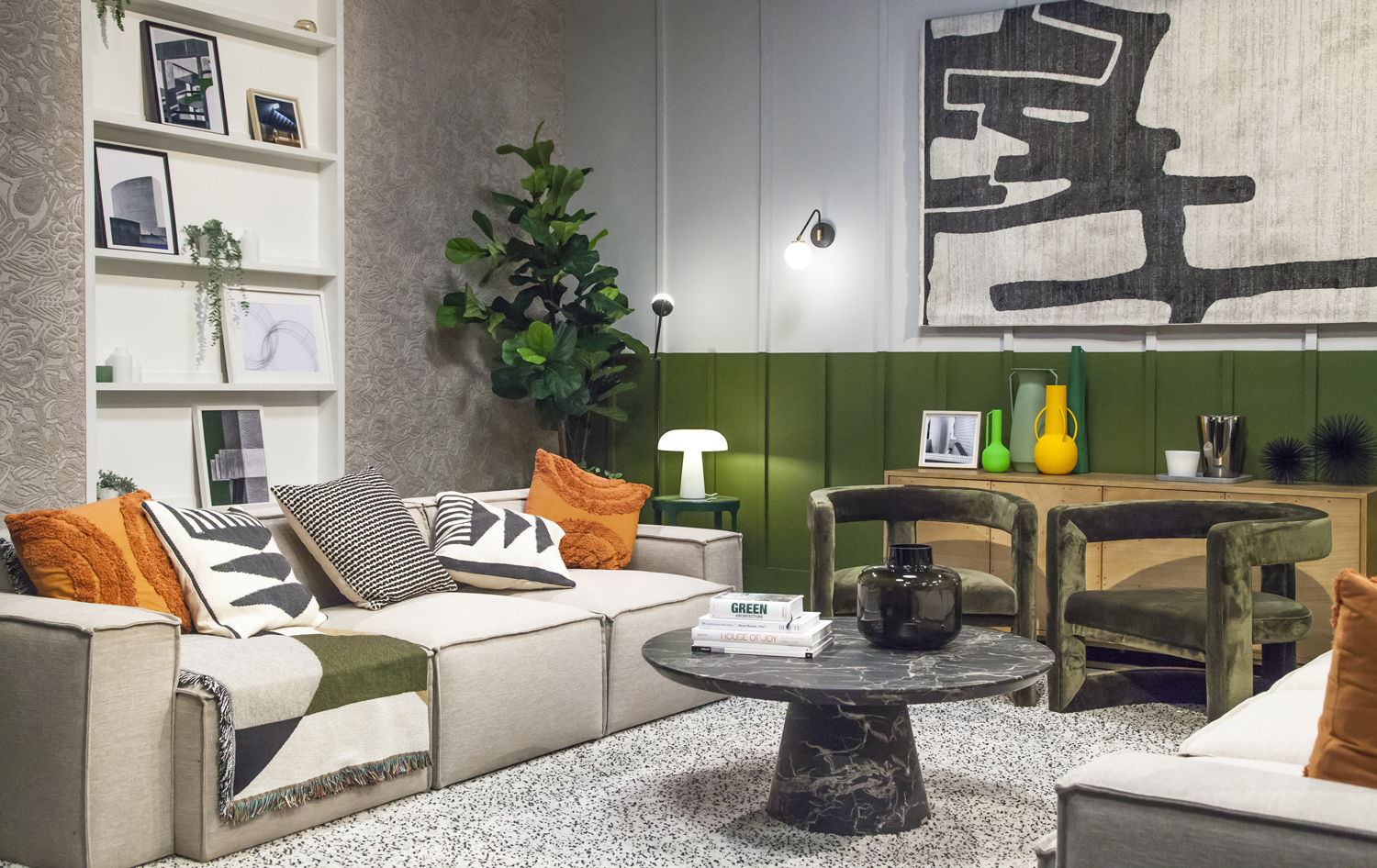We chat with interiors guru Joanna Thornhill about all things home-related, including top decor tips, advice on finding your personal style and the inspiration behind her latest book that delves behind the scenes of the popular BBC TV series Interior Design Masters. Read on to find out more.
Can you tell us a bit about your interiors background?
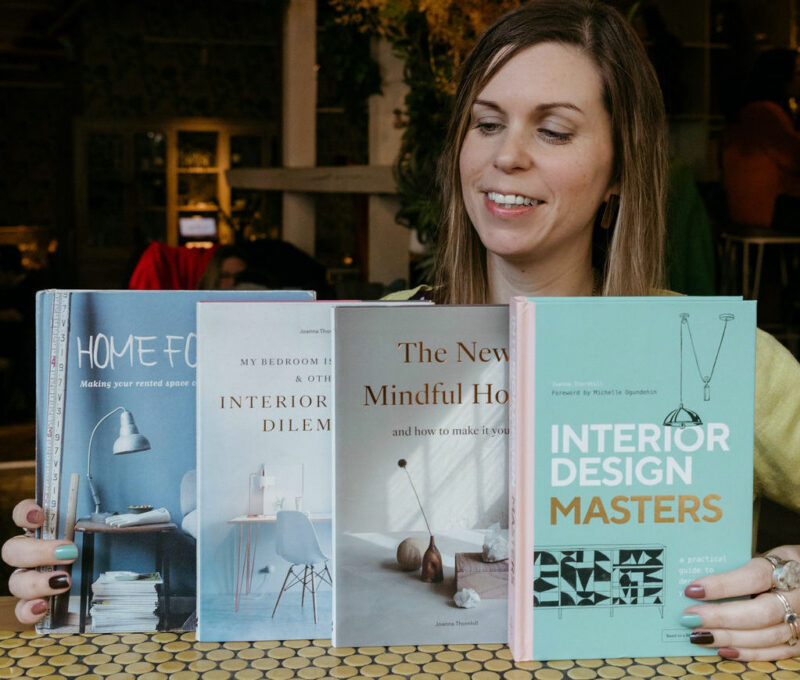
I’m an interiors expert specialising in styling, writing, consulting, speaking and teaching for a range of clients, both commercial and residential. My key areas of work are styling photoshoots for brands to use in their marketing and campaign imagery (past clients include Oak Furnitureland, among many others!) and my written work is mainly for magazines, alongside ongoing work as a Contributing Emerging Trends Writer for the trend forecasting agency WGSN.
Over the past few years, I’ve diversified a little and have started teaching courses and workshops covering interior design, for both businesses and individuals keen to learn more about certain aspects, alongside offering creative consulting and online design services for those simply looking for a little guidance to help them on their way.
My passion is helping others understand how to use design to tell their story, whether that’s for their brand or within their own home, and to explain how we can use design to enhance our well-being once we’ve clarified our own needs and understood the effects certain colours, shapes and styles have on our brains. I’m also the author of four interiors books.
What’s the premise of your latest book?
Interior Design Masters (published by Quadrille), is in association with the popular BBC1 TV series. Designed as a manual to all things interiors as well as to represent the best of the show across all four series, it’s broken down into easy-to-follow sections so readers can learn more about all aspects of the design process, based on ideas from the show, from how to begin planning your projects to looking at colours, layouts and design styles, right down to the finishing touches.
Why has Interior Design Masters become so popular?
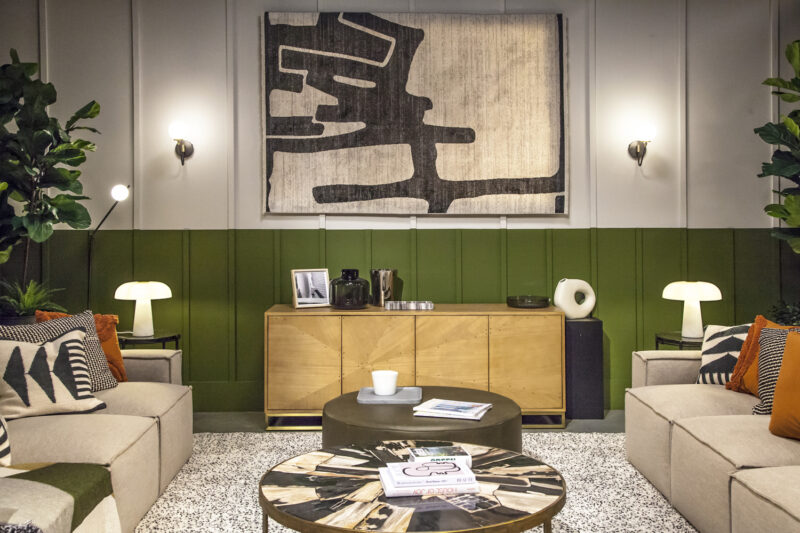
Sofa area in the design studio of season 4 of Interior Design Masters
I think design shows are always popular as they offer some escapist entertainment with an educational element, too – plus, while not everyone has a special interest in interior design, we all ultimately want to live in a space that makes us feel good, so there’s a curiosity to it, as well.
The nice thing about the show is that while the contestants’ work is of course critiqued and judged, it’s always constructive, rather than simply pitting people against each other for entertainment’s sake.
What is the most challenging aspect for contestants?
Interestingly I feel like – aside from the pressures of being filmed for a TV show – many of their challenges are what most people working in this field face on a daily basis: an unforeseen problem like discovering a damaged sub-floor that needs replacing, or hold-ups from deliveries not arriving on time or containing an incorrect order, and dealing with those knock-on effects.
In real life, there’s of course a little more flexibility to deal with these issues, but on a show like this, just like styling a photoshoot, you have to think on your feet and come up with instant workarounds.
Do you have a favourite room scheme from the series?
I really enjoyed the novelty factor of the beach chalets the contestants designed in Episode Five: I always think tiny, leisure-only spaces are really interesting to work on as you can afford to be a little more fun and playful, which they all were.
I actually really liked different aspects of all five designs – Temi’s really hit her beachy, eco brief, I loved Tom’s cosy weather-worn interior, Monika’s ‘gin palace’ felt super decadent, Peter’s colourful mural felt incredibly warm and playful, and Jack’s deco-themed space was stunning. I’m not sure I can really choose a favourite from these as they were so diverse and all finished to such a high standard – the judges had a similar problem in this episode, too!
What role do you think trends play in design concepts?
I spend a lot of time immersing myself in trends for my monthly trend reports, and for me, it’s about a lot more than simply ‘trending’ colours or patterns, it’s about looking at broader societal issues and how that impacts the way we live.
The pandemic, for example, obviously forced many of us to spend a lot more time at home and created the need for additional functionality which may not have been required there before, such as office and exercise spaces.
This has led towards more broken-plan and multi-functional living which can be easily adapted for fluctuating needs, and retailers have responded to this by offering, for example, modular or multi-use furniture, room divider screens to aid splitting up an open-plan space, and home office furniture solutions which look far more homely than corporate. For a trend to be successful, it has to be solving people’s real-life problems rather than simply looking good.
How do you first approach a project?
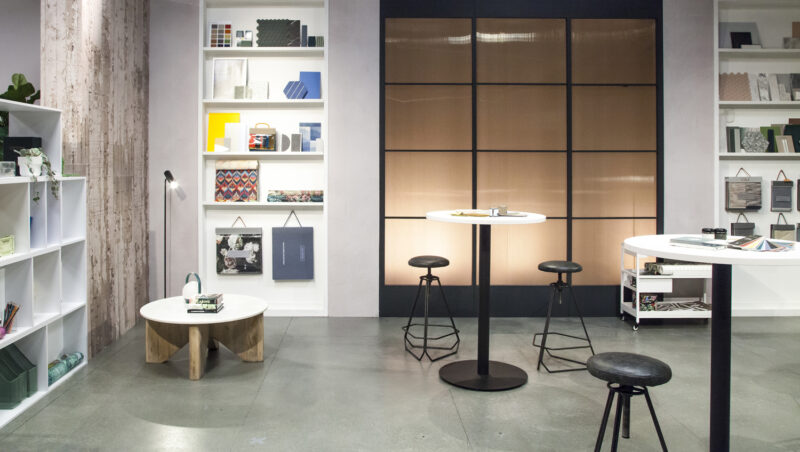
Studio set from season 4 of Interior Design Masters
It very much depends on the brief but broadly speaking, initially, I’d find out a little more about my client, whether it’s a brand or an individual: what are their values, aesthetic preferences and needs for that project or space? Then I’d start pulling together images and ideas that could represent the direction they are looking to go in.
Once the brief is clearer, it’s on to fleshing things out and selecting specific products or decorative finishes, clarifying design ideas and working out the practical steps to pull everything together and make it happen.
How are commercial and residential projects different?
They are surprisingly similar and surprisingly different all at once! The initial process mentioned above is often the same, but it’s the execution that’s very different.
When I’m dressing a space for a photoshoot, I’m purely thinking about how it’s going to look on camera and there’s often a lot of ‘faking it’ going on – floor tiles are laid down but left unfitted, walls are only painted as far as the camera will see, and lights are suspended from metal poles out of shot rather than fixed into the ceiling, for example. I will work with set builders, rather than traditional builders. It goes without saying that none of these cheats would be appropriate for a real-life home!
Do you have a favourite room to design?
It really depends on the concept and the space, but linking back to my comment earlier about the beach chalet episode of Interior Design Masters, I think there’s something really fun about designing a little escapist nook, where the focus is more on creating an immersive experience, rather than having to worry too much about practicality.
Has the world of interiors has changed since the rise of social media?
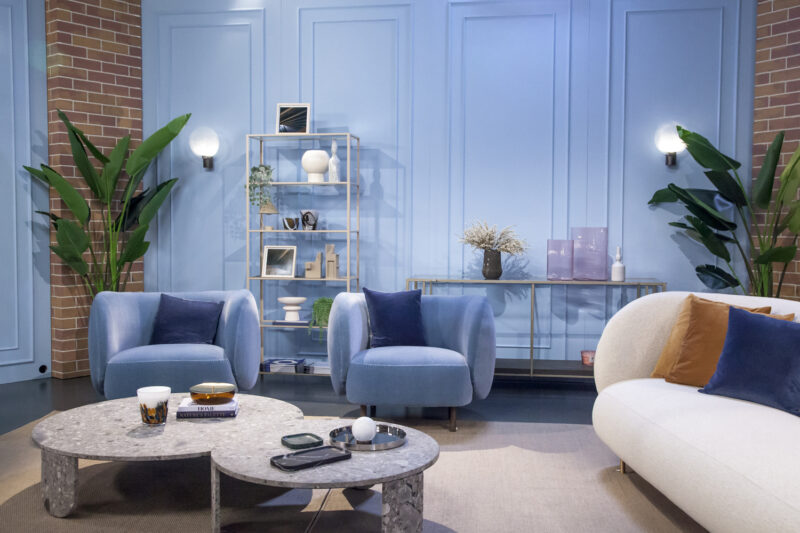
Judge Michelle Ogundehin’s office space from series 4 of Interior Design Masters
Hugely, and for both good and bad (though predominantly good!) I feel like design has become a lot more democratic and accessible to all, including previously overlooked groups such as renters, people on a budget and those living in tiny homes (which is increasingly becoming the majority of us, so it’s brilliant that more of us are being catered to!)
I do however think there’s a ‘danger’ of falling into the trap of simply copying the homes of favourite influencers, without necessarily understanding if it’s going to be right for you personally, or if that look will support your well-being needs.
It’s really worthwhile getting to understand your design personality (my previous book, The New Mindful Home, published by Laurence King, goes into this in a lot more detail). Once you’re clearer on this you’ll be able to decipher what colours, schemes or concepts might genuinely work for you, vs what might offer pleasing eye candy, but is best left on the ‘Gram.
What tips can aspiring designers take from the show?
Often on design shows, there’s so much to pack into the edit that it can be a real challenge to show all the aspects of a contestant’s design, so when it came to writing the Interior Design Masters book, I wanted to really use this as an opportunity to amplify some of the blink-and-you’ll-miss-it projects and DIY makes that were created across each series, and explain in more detail how readers can adapt them for their own homes.
So as well as giving how-tos for specific makes, there’s also lots of information on more fundamental design elements that regularly crop up in each series, such as creating a wood-panelled wall or making a simple box storage bench. The book also includes lots of tips and insights from both the contestants and the on-screen builders and carpenters, to help it feel more personal.
What’s your advice for finding your signature style?
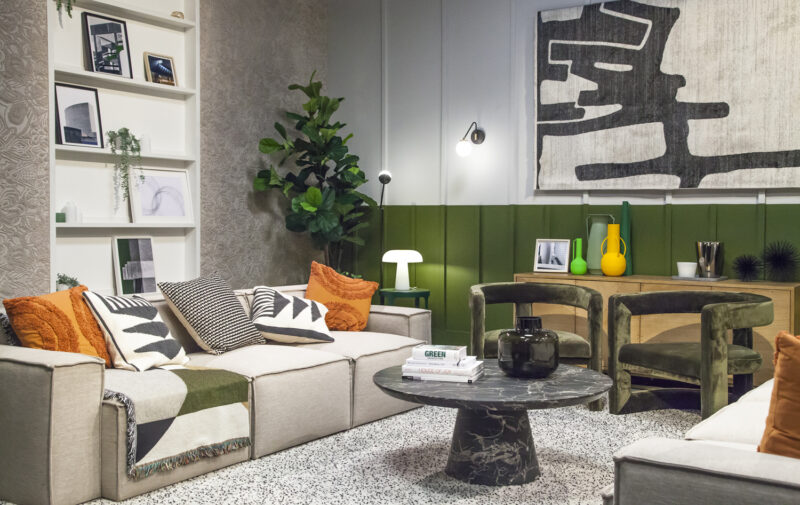
Breakout space from series 4 of Interior Design Masters
This aspect is very integral to the Design Masters ethos, and it’s a really useful principle to apply to real-life designing, too. It’s covered fairly extensively in the book, but in essence, it’s all about digging deeper than individual trends and getting to grips with your ‘design DNA’, which you can do by getting really curious about all things you: what colours, eras or looks do you feel naturally drawn to? Are there any patterns you feel nostalgia towards that always make you feel happy? Do you prefer a more neutral home, or does surrounding yourself with patterns and bright colours give you more of an emotional lift?
Taking the time to think about your personality type and preferences can really help determine all of this and give you a framework to take into account when making informed design choices.
To find out more about Joanna, visit her website at joannathornhill.co.uk or follow her on Instagram @joannathornhillstylist.

